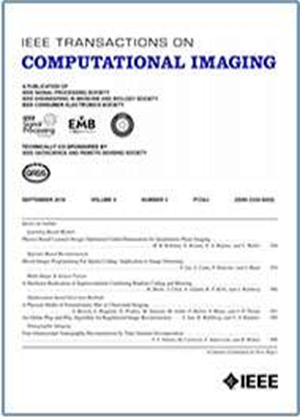Dynamic Scene Reconstruction for Color Spike Camera via Zero-Shot Learning
IF 4.8
2区 计算机科学
Q2 ENGINEERING, ELECTRICAL & ELECTRONIC
引用次数: 0
Abstract
As a neuromorphic vision sensor with ultra-high temporal resolution, spike camera shows great potential in high-speed imaging. To capture color information of dynamic scenes, color spike camera (CSC) has been invented with a Bayer-pattern color filter array (CFA) on the sensor. Some spike camera reconstruction methods try to train end-to-end models by massive synthetic data pairs. However, there are gaps between synthetic and real-world captured data. The distribution of training data impacts model generalizability. In this paper, we propose a zero-shot learning-based method for CSC reconstruction to restore color images from a Bayer-pattern spike stream without pre-training. As the Bayer-pattern spike stream consists of binary signal arrays with missing pixels, we propose to leverage temporally neighboring spike signals of frame, pixel and interval levels to restore color channels. In particular, we employ a zero-shot learning-based scheme to iteratively refine the output via temporally neighboring spike stream clips. To generate high-quality pseudo-labels, we propose to exploit temporally neighboring pixels along the motion direction to estimate the missing pixels. Besides, a temporally neighboring spike interval-based representation is developed to extract temporal and color features from the binary Bayer-pattern spike stream. Experimental results on real-world captured data demonstrate that our method can restore color images with better visual quality than compared methods.基于零镜头学习的彩色Spike相机动态场景重建
脉冲相机作为一种具有超高时间分辨率的神经形态视觉传感器,在高速成像领域显示出巨大的潜力。为了捕捉动态场景的色彩信息,发明了彩色脉冲相机(CSC),在传感器上安装了拜耳图案彩色滤波阵列(CFA)。一些尖峰相机重建方法试图通过大量的合成数据对来训练端到端模型。然而,合成数据和实际捕获的数据之间存在差距。训练数据的分布影响模型的泛化性。在本文中,我们提出了一种基于零射击学习的CSC重建方法,可以在没有预训练的情况下从拜耳模式尖峰流中恢复彩色图像。由于拜耳模式尖峰流由缺少像素的二进制信号阵列组成,我们建议利用帧,像素和间隔级别的临时相邻尖峰信号来恢复颜色通道。特别是,我们采用了一种基于零射击学习的方案,通过时间相邻的尖峰流片段迭代地改进输出。为了生成高质量的伪标签,我们建议利用沿运动方向的时间相邻像素来估计缺失的像素。此外,提出了一种基于时间相邻尖峰间隔的表示方法,从二进制拜耳模式尖峰流中提取时间特征和颜色特征。在实际采集数据上的实验结果表明,该方法能以更好的视觉质量还原彩色图像。
本文章由计算机程序翻译,如有差异,请以英文原文为准。
求助全文
约1分钟内获得全文
求助全文
来源期刊

IEEE Transactions on Computational Imaging
Mathematics-Computational Mathematics
CiteScore
8.20
自引率
7.40%
发文量
59
期刊介绍:
The IEEE Transactions on Computational Imaging will publish articles where computation plays an integral role in the image formation process. Papers will cover all areas of computational imaging ranging from fundamental theoretical methods to the latest innovative computational imaging system designs. Topics of interest will include advanced algorithms and mathematical techniques, model-based data inversion, methods for image and signal recovery from sparse and incomplete data, techniques for non-traditional sensing of image data, methods for dynamic information acquisition and extraction from imaging sensors, software and hardware for efficient computation in imaging systems, and highly novel imaging system design.
 求助内容:
求助内容: 应助结果提醒方式:
应助结果提醒方式:


